In a CNN and Henry J. Kaiser Foundation study in 2015, 49% of American’s believe race is a big problem in America. That rate is 8 points higher than when a similar study was done during the intense period of the O.J. Simpson trial and the Rodney King police beating. Many wonder, “Is this perception, or is it reality?” Many in the white community, especially those in the upper class, are asking, “Why are they so angry?” “When are they gonna just get over it?” Blacks and other minorities, especially the poor are frustrated and are asking, “Why can’t they see this for what it is?” “When are they gonna get it?” A better question we all need to ask is, “Where is this coming from?” Most Americans are oblivious to the pent up frustrations that have led to where we are now. For many people, they woke up to #TrayvonMartin on February 28, 2012, and “suddenly” we had a race problem in America. Yet, if you look beyond the cries for accountability for policing, you will find a brewing resentment and festering pain that’s been there for 35 for 40 years which birthed #blacklivesmatter and refueled other movements.
Beyond the eras of slavery, Jim Crow and Civil Rights, what are we really dealing with and how do we address today’s race dilemma? Is this a race issue, class issue or both? Though I’ve worked on race relations in corporations and reconciliation in the church for the past 25 years, I recognize our unique situation today requires more than quick fix solutions, shallow pat answers, or merely holding hands and singing “We Are The World” and “Kumbaya” for a “feel good” moment. I believe we’ll have our moment and feel better together, after a lot of hard work as we address this complex problem. This is our watch, and I’m writing this as a charge to the church of “today” to take our heads out of the sand, role up our sleeves, and more than just “practice what we preach,” understand God’s heart for how we tackle this issue now. In this article, I want to share with you a path of research God placed me on 6 years ago, in understanding where we are now with the race crisis in America. For me, this all started with an interpretation for a dream.
A Heart Wrenching Dream
A powerful dream was given to a friend of mine, Jonathan Tremaine Thomas, on August 18, 2010. In the dream, he was running down a sidewalk, away from Hispanic gang members trying to kill him. He then came across an African American gang, who also wanted him dead, and he began running from them as well. As he recalls his dream, he says,
“As I was running, I ran into an affluent man who had a large (well fed) build and a nice blue suit. He had white curly hair and a mullet. Intuitively, I knew that he was a ‘Southern diplomat’ and he had a smile on his face. Somewhat relieved, because I thought he was going to help me, I reached out my right hand to shake his and introduce myself, but as soon as our hands touched, he immediately did a Jiu Jitsu move that broke my arm. Then he began to move towards me. It happened so fast, and I was so startled that my instant reaction was to throw a left punch. However, his offense was so superior to my defense, that with barely any effort he made a move and broke my other arm, too! With broken arms, I realized my only hope was to run away from him, and the gangs, too.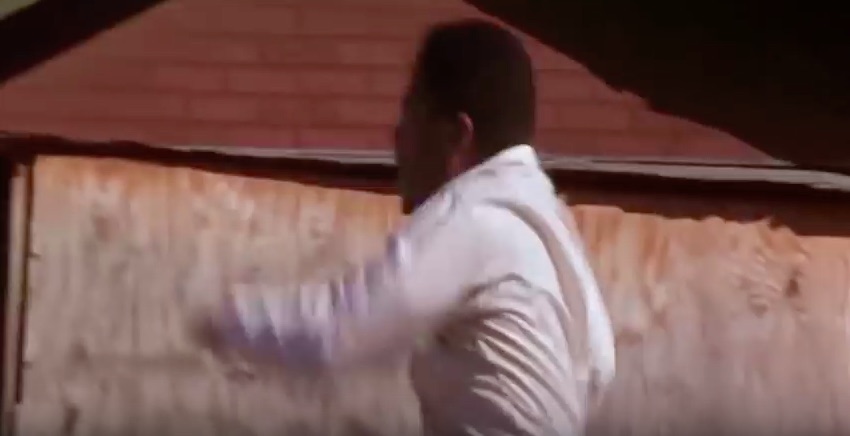
“Now with two broken arms, I ran from them all through backyards in an affluent suburban neighborhood. I could see both gangs riding through the streets and the Southern diplomat on an opposite street looking for me, and all were getting closer. I then ran into a tall wooden fence, like those that surround backyards and I knew that I would be free if I could just get over the wall. However, I couldn’t jump this one. The only way to make it over was to climb over it, but because my arms were broken, I couldn’t. I then looked down at the ground and thought that maybe I could dig a hole in the ground with my feet, and hide in it long enough for them to pass by me. I started digging by shuffling my feet, and I woke up.”
When Jonathan shared the dream with us, another friend, Benjamin Atkinson, said he basically dreamt the same thing that night. As Jonathan shared his dream, I was in tears as the Holy Spirit gave me this interpretation.
The Interpretation
In the dream, Jonathan, as an intercessor, was feeling what others are experiencing in their communities, particularly African American young men, who are bound by the penal system with felony records, who run in and out of prison. Like him, in the dream, they are running from gangs and street activity. The tall man with the big belly is their understanding of the system. His identity as a Southern diplomat is key because the South had Jim Crow laws to separate black and white. But now, many are talking about the new Jim Crow (which I will detail later) which started in the 80’s and explains the Southern diplomat’s mullet hairstyle from that time period. In the dream, when he reached out his hand to receive help, this man, the new Jim Crow system, harmed him and broke both of his arms.
In the dream he said he used Jiu Jitsu, which represents something foreign to him. In other words, the system which looked like it was there to help was so foreign to him, and had been deceptively set up against him. It disabled him by breaking his arms; and a man with broken arms can’t work. The symbolism here is powerful. Anyone who has ever had a felony will tell that, for them, finding a job is hard. Whether or not they disclose this on job applications, background checks will easily find this out and most employers won’t hire them. The unemployment rate for felons one year after leaving prison is up to 50%.
At the end of the dream, he was running to a wall, but couldn’t climb or get over it because his arms were broken. This wall represents the wall of division, separating him from society that many cannot work to financially overcome and avoid the obstacles in their midst. The wall also represents the environment of strife, hopelessness, and despair that many feel imprisoned by before they wind up in prison. In the dream, he decided to dig a hole or a pit in order to hide from his pursuers, and that’s what many do as well. Their shuffling feet lead them into more mischief and bad choices as they dig or entrench themselves in what they did before, which led them to jail or prison. Like facing a wall with broken arms, they can’t overcome the stronghold they’re in because the system has disabled them from working. Many think the only hope they have is digging deeper into what they did before, hoping not to get caught again.
In this profound dream, God is revealing what it is happening to people bound by the penal system with felony records, specifically with Black men. Their hands can’t work, (i.e. they have a hard time finding jobs, and they are disabled by the system instead of enabled to contribute to society with the work of their hands). Not only that, but in most states, a person with a felony can’t receive food stamps. Neither can they receive federal housing. With no work, food, or shelter to start a new life, in their minds, the most convenient place for them is the prison bed they left. Neither can they vote, which basically says that this person is invisible and has no rights. Many have described this scenario as the new form of Jim Crow today, which has created a new class of permanent 2nd class citizens.
The Old Jim Crow vs. The New Jim Crow
In addition to separating whites and blacks in restaurants, drinking fountains, etc., Jim Crow laws in the past restricted blacks from voting. In much the same way, the Reagan Administration and the Just Say No campaign of the 80s, politicized the War on Drugs by creating laws which took away the voting rights of felony offenders, and drug laws that called for mandatory sentencing. Next, during the 90’s, the Clinton Administration, with the Omnibus Crime Bill of 1994, cut funding for education in prisons and expanded the flow of military equipment to local police departments. Just as Nancy Reagan was her husband’s champion for the War on Drugs, Hillary Clinton lobbied liberal lawmakers on behalf of her husband’s crime bill, which called for approximately $10 billion for new prisons, and even harsher sentences. As a result of the mandatory sentences and harsh penalties imposed by both administrations, the prison population grew 60 %. The number of people behind bars for nonviolent drug law violations increased from 50,000 in 1980 to more than 400,000 by 1997. As a result, though the United States has less than five percent of the world’s population, we have almost 25 percent of the world’s total prison population. The numbers today are much higher than they were 30, 40 years ago despite the fact that crime is at historic lows.
Of course, there are issues that need to be addressed within the black community in America that lead to poor choices, starting with the breakdown of the family unit. While many trace this back historically to slavery, we must become accountable, today, for raising strong families. There are also issues that need to be addressed outside of the black community that specifically target the community in certain ways, such as the commercialization and commodification of gangsta imagery being glorified through music and drugs that are often pushed by outside cartels into the black community. And while we must admit the responsibility of the individual to choose to produce music and substances that are detrimental to African Americans and society, we must address the obvious inequalities seen among other perpetrators.
Of course, the obvious difference between the Old Jim Crow and the New Jim Crow is the blacks of old, in general, were not committing crimes. Their only “crime” was the color of their skin. Whereas now, some of our men and women who choose to commit crimes are playing into the hands of the prison industrial complex. While somethings that are happening, are indeed inequities, some of us need to address questions like,”Why are we selling drugs in the first place? and “Let’s start first with the “behavioral issues” in our own children?” Notwithstanding these questions, when crimes are committed, this generation is aware of the glaring discrepancies that are carried out, because we have faster access to information due to the internet.
As a result, this generation is also asking, “We often hear of the illegal street drugs found amongst black inner-city students and youths, but what of the prescription and other illegal drugs found amongst the white, middle-to upper class students in college prep schools? We often hear about the robberies in the ghettos, but what of the criminal acts that take place in non-black corporations of much longer periods of time? And what of the obvious differences between the types of crimes committed by black vs. white criminals? (i.e., Ethan Crouch, “affluenza” defense, and Sarah Furay, the “Adorable Kingpin”). If justice is to be carried out, it must be done with equity on both sides.” With enough fingers to point all around on these issues, the perspectives, pent up resentment and anger can’t be ignored any longer. The pain is real and is there for a reason.
Many believe the genesis for this resentment began in the 80’s. In the eyes of many, there was a gross racial and status inequity in how the upper class were handled and given minor convictions for powder cocaine arrest, versus minorities and the poor were treated for crack cocaine arrests. CBS News reported, “The disparity in sentences for crack versus powder cocaine had long been criticized as racially discriminatory because it disproportionately affected black defendants. Under a law passed in the 1980s, a person convicted of crack possession got the same mandatory prison term as someone with 100 times the amount of powdered cocaine. Five grams of crack, about the weight of five packets of Sweet’n Low, brought a mandatory five years behind bars; it took 500 grams of powdered cocaine to get the same sentence.” Since crack cocaine was far more addictive, harsher mandatory sentences were used to try to curtail the epidemic. Unfortunately, short sighted policy makers began drafting laws whose unintended consequences fed the building narrative of racial disparity. According to The Sentencing Project:
“Sentences for federal drug crimes are based on the quantity of the drugs involved, not the individual’s role in the crime. The emphasis on quantity rather than the role of the offender, along with the conspiracy laws, too often result in disproportionate sentencing, even for first-time offenses such as the Garrisons’.“
According to Michelle Alexander, author of “The New Jim Crow,” the Jim Crow color lines moved from the water fountains of the 50s and 60s, to the courtrooms in the 80s and 90s, making drug convictions the new segregational deciding factor by way of socio-economic class and race. On the surface, some might say “This looks like a justice stand for people who are guilty of crimes,” but unfortunately, many who got wrapped up in the war on drugs were innocent, yet were forced into plea deals that placed a felony on their record, along with exorbitant sentences. During this time, even those guilty of even minor drug offenses received draconian sentences, as in the case of Patrick Carney in Louisiana, who received 30 years in prison for selling $25 worth of marijuana. Eventually, this all became a convenient way to marginalize, warehouse, and control a population of people. Not all fully agree with “The New Jim Crow” narrative fueled by Michelle Alexander’s groundbreaking book, and believe we have a class issue more than a race issue; nevertheless, even conservative thinkers acknowledge how the poor are many times treated unfairly by the criminal justice system and the need for accountability and change is necessary. Stephan Bibas, though critical of Alexander and other liberal’s interpretation of some of the data in her book, writes in his National Review article:
“But just because liberals are wrong does not mean the status quo is right. Conservatives cannot reflexively jump from critiquing the Left’s preferred narrative to defending our astronomical incarceration rate and permanent second-class status for ex-cons. The criminal-justice system and prisons are big-government institutions. They are often manipulated by special interests such as prison guards’ unions, and they consume huge shares of most states’ budgets. And cities’ avarice tempts police to arrest and jail too many people in order to collect fines, fees, tickets, and the like. As the Department of Justice found in its report following the Michael Brown shooting in Missouri, “Ferguson’s law enforcement practices are shaped by the City’s focus on revenue rather than by public safety needs.” That approach poisons the legitimacy of law enforcement, particularly in the eyes of poor and minority communities.”
As Hip Hop rappers dove into Gangster Rap, becoming a pied piper for a generation between 1980 to 2000, the new Jim Crow was giving longer prison convictions for the crack cocaine that the gangster rappers were bragging about selling or “slinging.” As a result, we saw an increase in prison levels, until, for the first time in recent history, we had more black men in prison than in college, by the year 2000.
Jim Crow in the Classroom
This answers where many black men have wound up, but where did this start? Of course, we are aware of the fatherlessness issues, but the other cohort is the classroom. In the past, Jim Crow-type laws prohibited slaves from reading or writing. Why? Because to keep someone a slave forever, you keep them ignorant. Many former slave accounts from Frederick Douglas and others, mention how they were beat unmercifully for even having a pen or paper. Yet, after slavery was over, Jim Crow laws have kept blacks from access to a quality education. Today, through the soft bigotry of low expectations, the new Jim Crow is educationally marginalizing a new generation.
Many educators have talked about the Special Education problem in the American school system. Disproportionately, young latino and black boys in the 2nd and 3rd grade have been placed in these Special Ed. classes when they have behavioral issues, not learning disabilities. Sometimes, young people are selected for this program in 8th or 9th grade as well. Unfortunately, due to funding from the government for Special Ed. students, schools and parents are sometimes profiting from the program at the expense of casting away a child, placing them deeper into a system of learning which is woefully deficient, and doesn’t set them up for success in society. Unfortunately there’s enough blame to dish out on this issue, because of parents and officials chasing government funding.
One teacher told me of a parent who chased her down in the hallway with an application to place her B+ student in Special Ed.! The teacher said, “I’m not signing that; your daughter is a very capable student and very bright. Don’t you realize this could cripple her education?” to which the parent replied, “She’s crazy. She talks to herself, and you just don’t know. She needs to be in this program,” which was a total lie. This parent already had one student in Special Ed., and was receiving money for him from the government, and now wanted to receive money for her daughter as well. Unfortunately, some inner city parents are trying to make Special Ed. a new form of generational welfare.
Not only some parents, but some of the school principals as well are benefiting by using Special Ed. to subsidize their budgets. This was all explained to me in a symposium where many leaders in Harrisburg, PA were meeting to discuss the plight of the young black men in their city and once again, Special Ed. reared its ugly head. After confirming that 2nd and 3rd grade black boys were being marked for Special Ed. disproportionately due to behavioral issues, not learning disabilities, this educational consultant also explained, “One of the other reasons that black boys are disproportionately being placed in Special Ed.later on, around middle school and 9th grade, is due to the government funding the school receives. If a principal begins to think, ‘I need more money for my revenue-bearing entities, so I need some more jerseys and helmets. Well, 6 x 9 is 54, so I can get 54,000 more dollars ($9,000 per student) by getting 6 more kids in Special Ed.’” The consultant then continued, “The problem with this is that now, the state of Pennsylvania is building its largest prison. And the way they forecasted how large the prison needed to be and how many beds they should have was by looking at the 3rd grade reading scores in the state, and how many children were in the Special Ed. population.”
Criminalization of Truancy
Add to this police presence within schools where offenses worthy of a trip to the principal’s office 30 years ago, now causes a student to wind up in juvenile court and / or jail. Another major problem is the criminalization of truancy. In Texas public schools, students had to pay up to $500 in fines and also had to spend jail time for being tardy to class or missing too many days. This story from the USA Today about this subject explains the individual impact on one student:
“Peyton Walkers absences began piling up in seventh grade as she suffered from depression, anxiety and migraines, she said. After missing a court date in Dallas County truancy court at the age of 12, she said she was arrested and handcuffed at school in the Dallas suburb of Mesquite. Walker said the legal situation just made things worse. ‘It was more. No matter if I go (to school) or not, I’m going to go to court anyway,’ said now 18 year old Walker, who graduated from high school this spring. She and her mother, who is on disability, still have $2,000 in pending fines, and Walker won’t be able to get a driver’s license until they are paid.”
Texas recently decriminalized students’ truancy in June 2015, but after years of enforcement, repairing the damage will take time. All of this led to Public schools becoming a new pipeline to prison. According to Michelle Alexander’s book, The New Jim Crow, we have more Black men in the prison system than we had slaves in 1850. Though black men make up 6% of the general population in America, they account for 38% of the prison population. Some are making the case that beyond a new form of Jim Crow, this has become a new form of eugenic warehousing, to control a population of people.
New Jim Crow or New Eugenics?
Anthony B. Bradley, in his powerful Acton Institute article, “Mass Incarceration: The New Eugenics?” writes,
“Today’s prison population is largely comprised of “lazy, lustful, and cunning” lower class whites, blacks, and Hispanics, whom elites and progressives institutionalize in “correctional” facilities and then nearly permanently control them and their families in a closed ecosystem of government programs, including “reproductive services,” while never addressing the core moral issues that sabotage freedom and success. Sentencing someone to prison for one year on a marijuana possession charge, or in the 2011 case of Patrick Carney in Louisiana, sentencing someone to 30 years for selling $25 worth of marijuana is wasting both financial and human capital.
Represented by public defenders and often unaware of their legal rights, many of these offenders are manipulated into pleading guilty to charges that high-powered attorneys would get dismissed altogether. To make matters worse, the state of California is under federal investigation for deceptively sterilizing female inmates from 2006 to 2010. The scandal of today’s mass incarceration associated with the War on Drugs is the failed attempt to use the police, lawyers, judges, corrections officers, and social workers to address issues that are profoundly moral in nature. People should be sent to prison because they are dangerous to society not because we are mad at them and want to reform them….we set the lower classes up for a lifetime — sometimes, generations — of government control. This softer form of eugenics is worse than Jim Crow.”
The New Jim Crow is a warehouse, which is comprised of four walls of division: Law enforcement, education, social services and prison. As a result, police officers are negativley seen as gatekeepers that direct those within the inner city away from mainstream society. What we are seeing now with riots and the #blacklivesmatter movement, is pent up resentment and hopelessness built up over the past 35 years to 40 years from a generation of permanent 2nd class citizens and their loved ones who feel warehoused. How can we turn this around?
The Answer
In a follow up article, I’ll share some shining examples of policies and programs that are working, and the people who are making a difference. One that I want to share now is from Philadelphia, where Linda Cliatt Wayman fixed a broken school by leading fearlessly and loving hard. (Her TED Talk is posted below). Another example in this article is the Prison Entrepreneurship Program, which is raising up entrepreneurs in prison, and preparing them for success once they leave. While these are amazing examples that were initiated by Christians, there is still more that must be done to tackle these problems that are fueling the racial tension in America.
The scripture the Lord gave me for this is Zech 9:11, “As for you also, because of the blood of My covenant with you, I have set your prisoners free from the waterless pit.” There is no quick fix to this complex issue, but it will not be solved with lasting results without the hands on involvement of the church. Referring again to Jonathan’s dream, the answer is that Christ’s blood has paid for every mistake these prisoners have made, and He wants to set captives free from the pit of bad choices they’re hiding in, as well as environment they are bound by. The Lord wants them to replace the stronghold of hopelessness, with a stronghold of hope. The next verse says, “Turn you to the stronghold, ye prisoners of hope: even to day do I declare that I will render double unto thee…” On the front end, the church must get involved in the public school system and be a voice: From the classroom, to the Boardroom. We also must get involved on the back end.
The Fair Sentencing Act passed by Congress in 2010 and signed by President Obama reduced the disparity in prison sentences for future cases. That summer the U.S. Sentencing Commission, which sets federal sentencing policy, decided to apply the Act to inmates already serving time, and since 11-1-11, these prisoners have been eligible for release.
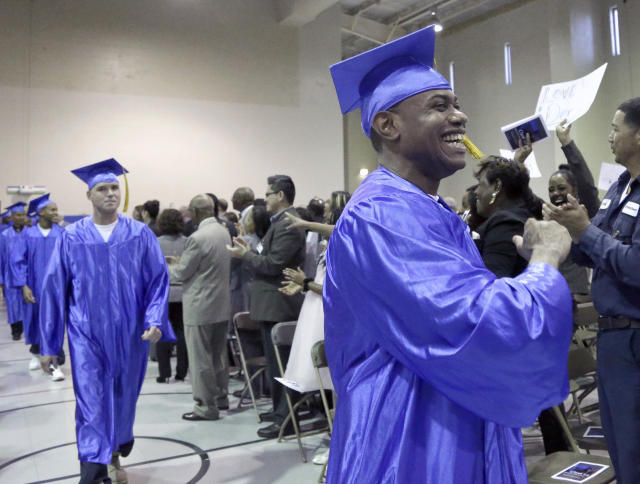
In this photo taken Dec. 12, 2014 shows inmates, in caps and gowns in the Prison Entrepreneurship Program marching toward the stage for graduation ceremonies, at the Cleveland Correctional Facility in Cleveland, Texas. The Prison Entrepreneurship Program, or PEP, is based on a philosophy that making inmates like Chavez business savvy will reduce the likelihood that theyll end up back in prison. It emphasizes reforming behavior while also working on a broader goal of reducing the prison population. (AP Photo/Pat Sullivan) The Lord wants a united Church to be the stronghold of hope these prisoners can run into to get restored, and return to working and functioning in society. I say that the Lord wants the Church to do it because Zech. 9:11 says it’s because of blood of the covenant He has with His covenant people. I believe this is God’s 911 call to the Church to help those who feel warehoused to become functional in society. Christ desires for us to do this, and He also says that when we do it, we minister to Him.

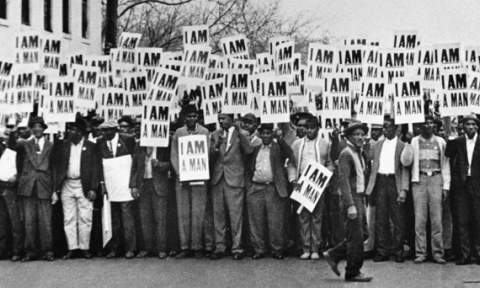
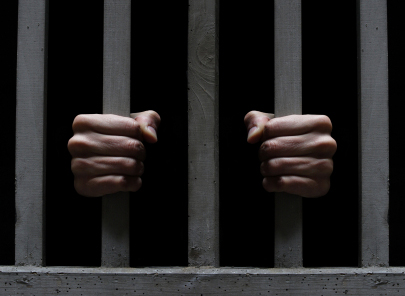
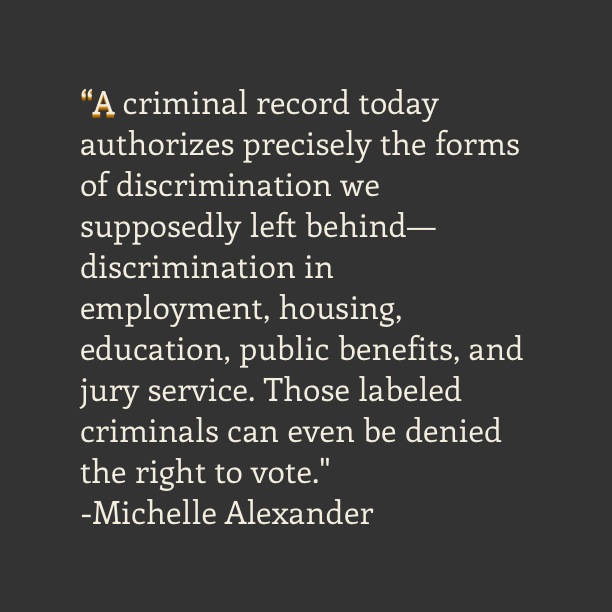
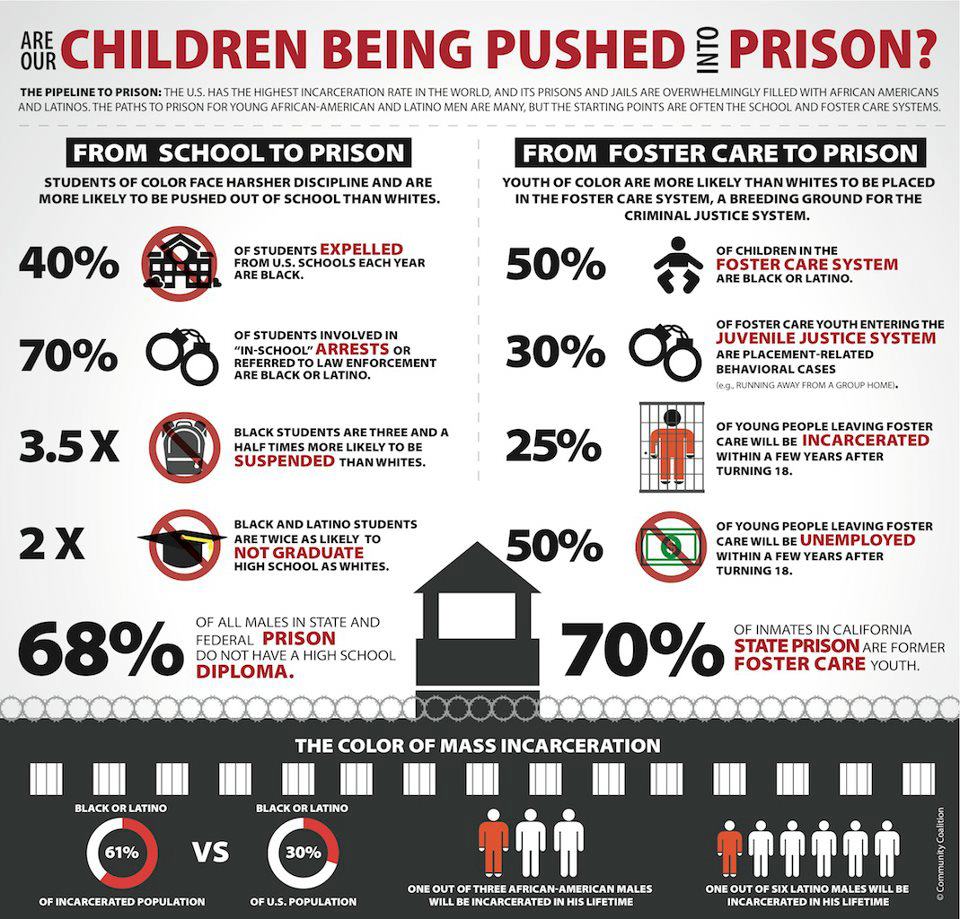
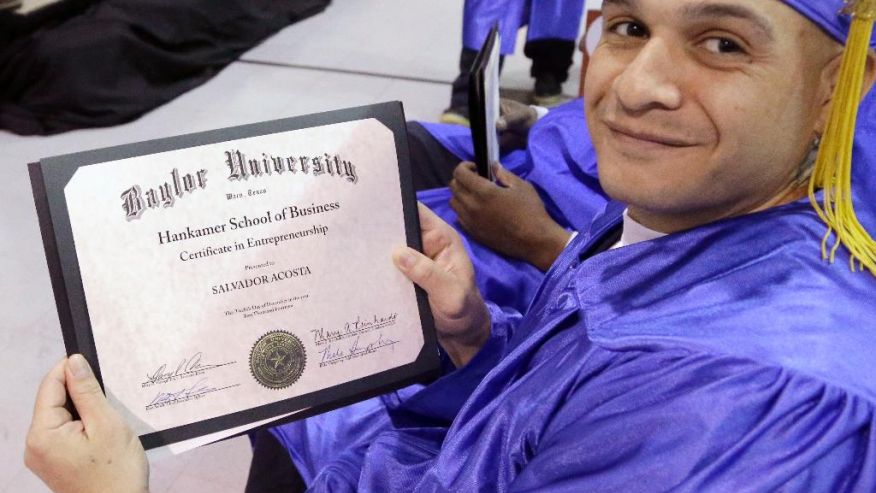
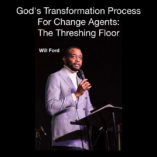
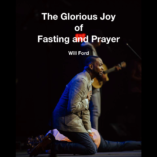

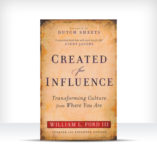
Praise the name of the Lord pastor Will, I am deeply touched about this great article. I could not stop my tears from coming as I read and re-read through this great piece, the dream and the interpretation the Holy Spirit gave you to it. Am in total agreement with what you suggest as the solutions to the end of the racial Tention in this Nation. Being an Arican and A black young man who grew up from Africa, I never really ever thought racism existed especially since bye the grace of God my father’s ministry New Wine Ministries Africa had always had different Misionaries of different colors come to Uganda. But coming to America changed my life forever since I had to watch what I did, where I was and watch out for my own life not because of anything but because of just the color I had. In agreement to what you suggest I strongly think that what is going to solve the problem of America is unity among people. Blacks, Latinos, Whites should all accept the fact that they are all created in God’s Image. While I was praying about what to say about the Ex-felons and the poor system, this song came to me “Blameless by Dara Maclean”, we need to pray that the Lord gives the Ex-Fallon’s and the system and people who have never been in prison to view them like Jesus sees each one of us. All of us have sinned and fallen short in one way or the other and we needed the Lord who would not only forgive us but also never ever remember our sins or even label us with tags that will ever keep us in bondage to our past Mistakes. One of the things I totally hate and disagree with is the label give to the Blacks and Lations as “Minors”. This is not right and another form of slavery that keeps people bound into this indetity. The Lables or names we carry have a lot to do with the indetity we own. No one either white, black or Latino, brown, green, or purple should have any form of indentity like this. Great work sir and I dream to see America saved and changed one day that one day Racism will be a Testimony and not a Tention. Blessings.
A stellar piece, my friend. Frustrating and hopeful. It’s time we stop wearing the jersey of our political team’s talking points and stand for actual truth.
Bro. Will,
I am a former white school teacher who is a believer in Christ.
I spent several years teaching in all black schools; I also taught
in all white schools. The Truth of my experience is this:
The blacks, with just a few exceptions, had extreme prejudiced toward
me at the high school level. However, the younger the black students such as 7th grade and younger, there was such a difference – even acceptance of me – even some liking me very much. I attribute this to child-like innocence (i.e. lack of built in prejudice)and lack of experiencing the frustrations with the system older blacks experience as well as increasing peer pressure to conform to the norms of the local society and belief system. Growing up in the 50′, I lived a few houses down from where the black neighborhood began. I delivered newspaper throughout the black neighborhood. I was invited into their homes to have supper – which I accepted. Sometimes I played football
with approx. 40 blacks, and I, the only white. We had great times together, they really liked me and the feeling was mutual. Now dear brother, I know you are going to disagree with me on this, but before you fully reject it, at least think about it. In Ecclesiastes 3, it says there is a time and season for everything under the sun. I believe Martin Luther King pricked the conscious of the nation – all that he called for was equality – not to be judged by skin color. However, when the government stepped in to pass laws that required just the opposite of what Martin Luther King called for, and demanded by law that we look at skin color to give preferences by discriminating against whites, there was bound to be growing contention rather than acceptance and reconciliation. President Johnson was a former school teacher among very poor Hispanics and no doubt he could relate to the sufferings of poor blacks, but he was also a corrupt politician who lied to be elected by promising to stop the Vietnam War, but after elected, escalated the War. He saw the King movement as an opportunity to control a significant populous for the Democratic party and why he initiated affirmative action and give-away programs. What should have become law is free education for all blacks even thru PHd programs and extreme punishment civil…and even criminal, if any employer or someone hired to hire others, in any way discriminated in hiring blacks in the workforce. There should have been mandated airtime for history of what blacks suffered.Blacks owned more houses and land before the Civil Rights movement than afterwards. They also owned more businesses then than now. The Govt. should have helped the community to increase their land and business operations rather than herding them into Welfare projects. The churches, both black and white should have been encouraged – even incentivized, to teach on strong families and communities and Christ message to Love your neighbor. Extra effort should have been made to reach the elementary age – both white and black, by teaching acceptance of one another rather than rejection. Any extreme group KKK or Black Panthers should have been utterly crushed unmercifully and any an other form of prejudice. Black leaders should have arisen to encourage blacks to outwork the white man, get there earlier and leave later. Soon black would be hired over whites for pure economic reasons. I don’t claim to have all the answers; in fact, I have very few, if any. But I will say this, I had a black man who use to mow my yard. I tried to walk in love toward him and gave him an air conditioner,boots, money, helped him find a full time job, etc. but most important, shared the good news of Christ. None of this seemed to have much effect on him. Years later, he called me desperate for help. So a doctor friend and myself (now an attorney) paid for him to finish college. Today, he is a minister of the Gospel and loves everyone. We all need to make personal investments in one another – we are all equal before Him, and should emulate what love he showed while on earth and even now toward mandkind.